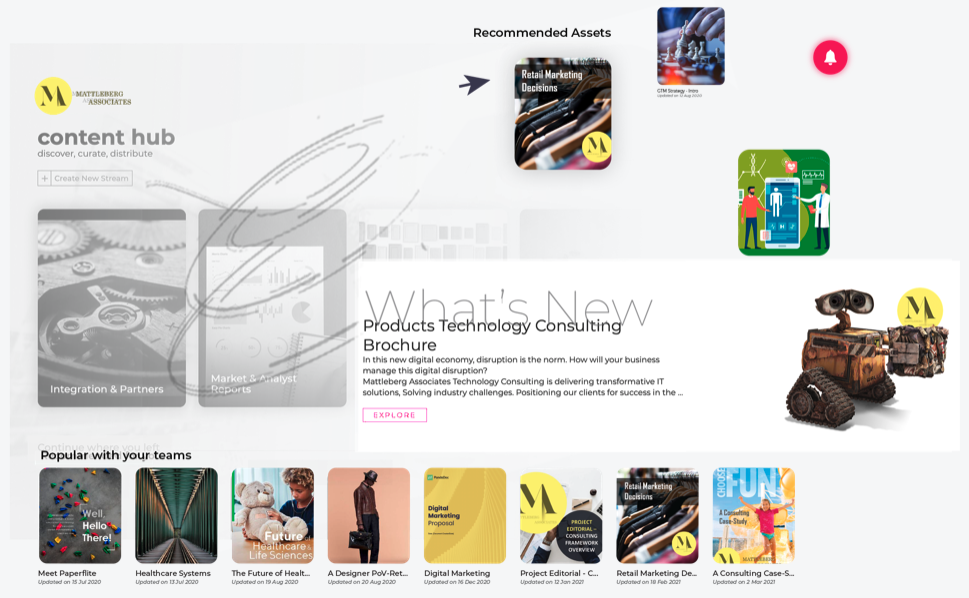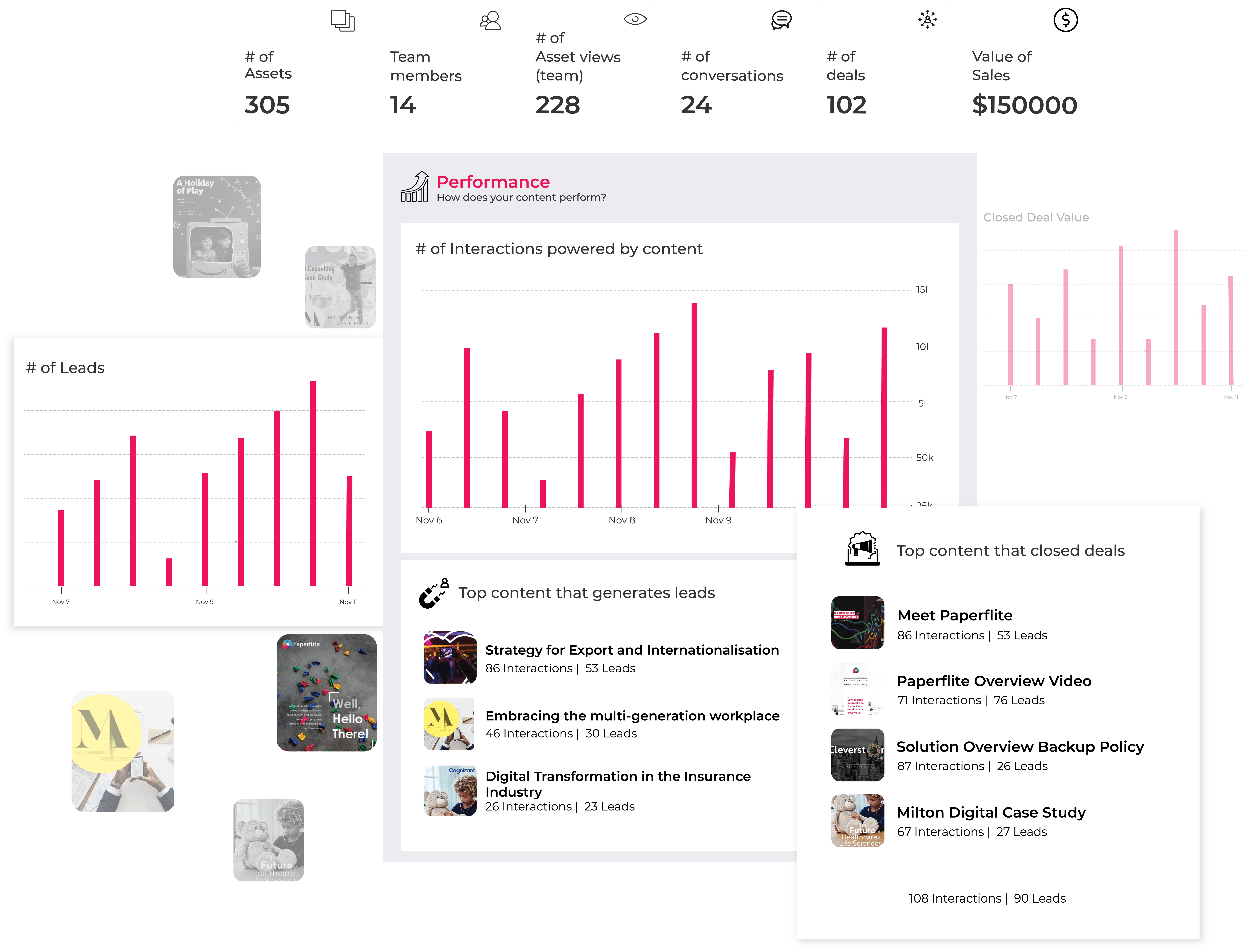How to Master Sales Enablement Communication?
86% of employees and executives cite a lack of collaboration or ineffective communication as a cause of workplace failures. For sales teams, this would mean missed opportunities and lost revenue.
Imagine your sales team is ready to close a deal but is tripping over outdated product info or inaccurate messaging.
A seamless flow of communication is the backbone of sales enablement, which, in turn, is the key to the sales team’s success.
In this blog, we’ll look at,
- The role of communication in effective sales enablement
- The teams who have to play well together to make this work
- How to start laying the groundwork for it and some best practices
The Importance of Communication for Sales Enablement
You've invested in training programs, curated top-notch sales collateral, and implemented the latest sales technology. Yet, something feels off. The results just aren't where they should be. The culprit? It might be a communication gap.
Reports suggest that over 80% of sales enablement failures stem from a lack of clear and consistent communication. In this section, we'll explore how communication acts as the invisible thread that binds all your sales enablement efforts together.
Ensures Aligned Messaging and Content Creation
Communication bridges the gap between Product, marketing, and sales, guaranteeing a consistent message across all customer touchpoints. Reps have clear talking points and can leverage content that resonates with customer needs, resulting in more persuasive and impactful sales conversations.
Facilitates Effective Knowledge Transfer
Sales enablement goes beyond initial training. Ongoing knowledge sharing through coaching sessions, internal knowledge bases, and communication platforms is crucial to keep up with product updates, competitor insights, and best practices.
Well-established communication channels allow reps to ask questions, share challenges, and engage in discussions. This helps to identify gaps in knowledge and content, enabling better continuous improvement programs and ensuring reps are always up-to-date.
Turns Customer Insights into Actionable Strategies
A good communication flow enables feedback loops. Sales reps can now not only communicate the challenges that they are facing but also share customer feedback and feature requests. This continuous feedback cycle ensures your product and your go-to-market teams are constantly optimised and evolving in the right direction.
Fosters Collaboration Through Communication
Communication fuels collaboration between sales reps (the frontline) and other departments. This results in the teams sharing not only their requirements and direction but also best practices, deal strategies, and competitive intelligence. Such collaboration helps build a more agile workforce that can adapt to evolving customer needs and changing market conditions.
Key Teams Involved in Sales Enablement Communication
For effective sales enablement, several key teams must work together seamlessly:
Sales Team: The primary users of enablement resources, interacting directly with customers.
Marketing Team: Responsible for crafting compelling messaging, customer personas, and market insights.
Content Creation Team: Develops sales collateral, presentations, and other communication materials.
Product Team: Provides in-depth product knowledge and updates the sales team on new features and functionalities.
Customer Success Team: Shares valuable insights from customer interactions and pain points.
Marcomms Team: Handles reports, investor presentations, company-wide announcements, and more.
Breaking Down the Sales Enablement Communication Cycle
Communication in sales enablement is a dynamic, multi-directional conversation. By Enabling a continuous exchange of information, sales enablement keeps everyone aligned and empowered. Here are a few ways information flows to keep everyone on the same page:
- Reps Share the Firsthand Customer Feedback: Sales and customer success teams are the eyes and ears on the ground. They provide valuable feedback on customer needs, challenges, and content requests. This intel goes straight to the content marketing team who can use it to create targeted content that resonates with real-world customer issues.
- Marketing Enables Sales with Information: The marketing team stays on top of market trends and competitor intel. They share this knowledge with sales enablement, who then equips reps with the latest industry insights and talking points. Marketing also helps identify what content to prioritize for creation based on market trends.
- Product Team Shares Their Roadmap with Marketing and Sales: The product team keeps everyone informed about new features and updates. Sales enablement translates this information into clear, actionable sales tools and training for reps.
- Sales Reps Pass On Customer Requests to Product Teams: The conversation doesn't stop there. Customer feedback from sales and success teams can spark product innovation. New feature requests or common customer pain points are relayed to the product team, who can use this information to shape future product development.
- Sales Enablement Keeps communications constantly flowing: Sales enablement acts as the central hub, consolidating and refining information from all sides. It ensures everyone has the latest updates, resources, and knowledge to excel in their roles.
- Communication beyond marketing, sales, and product: Sales enablement also helps streamline communication with external parties like customer support. This ensures a smooth customer experience by facilitating a clear flow of information between sales reps, support teams, and customers themselves.
The Power of a Single Source of Truth - paperflite
Reps need quick access to the latest product brochures, marketing wants to share competitor battle cards, and customer success teams crave easy collaboration on case studies. But where do they find everything they need, and how can you ensure it's all up-to-date and accurate?
This is where a Content Management Platform (CMP) specifically designed for sales enablement comes into play. It keeps everyone in sync, ensures clarity, and empowers your sales team with the right resources at the right time. Products like Paperflite are a great example of such a platform.
Here’s how a Sales Content Management Platform enables a constant flow of communication:

- One Place for All Sales Content: The platform stores all your sales content, resources, and communication history in a centralized location. No more hunting for that elusive presentation or scrambling to find the latest product update.
- Maintains Content Consistency and Accuracy: A single source for content ensures that everyone is working with the most recent and accurate information. No more outdated content floating around, leading to confused reps and potentially misleading customer interactions.
- Measures Content Performance and Effectiveness: The platform provides valuable insights into content performance. Track which resources resonate most with your audience and see how content engagement translates into revenue generation. This data helps you tailor your content strategy and identify what's working (and what's not).

- Enables Effortless Sharing and Collaboration: Forget clunky email attachments and version control headaches. The platform allows reps to quickly access and share the right content with colleagues and customers, fostering seamless collaboration and ensuring everyone stays on the same page.
Enabling Seamless Sales Enablement Through Communication: A Few Best Practices
Here are a few best practices that will help build a strong and constant flow of communication that will result in a happy and well-armed sales team:
- Establish multiple channels of communication: Use a variety of communication channels like meetings, internal chat tools, and project management software. This ensures everyone can connect in the way that works best for them and the situation.
- Clearly Define Roles and Responsibilities: and more importantly, communicate that to the key teams involved. This avoids confusion and ensures everyone knows who to contact for specific information or updates.
- Encourage open communication and feedback loops: Reps should feel comfortable sharing challenges, and feedback from the field should be incorporated into content and product improvements.
- Leverage Technology to Enable Communication: Implement communication tools and centralized content management platforms across the business. This will help streamline communication and ensure everyone can access the latest information and resources quickly.
Seamless communication empowers your sales team, bridges the gap between departments, and ultimately boosts sales success.
By implementing these best practices, you can unlock the full potential of your sales enablement strategy. Don't let communication gaps hold your sales team back. Take action today and see the difference a well-oiled communication machine can make in your sales success story!
